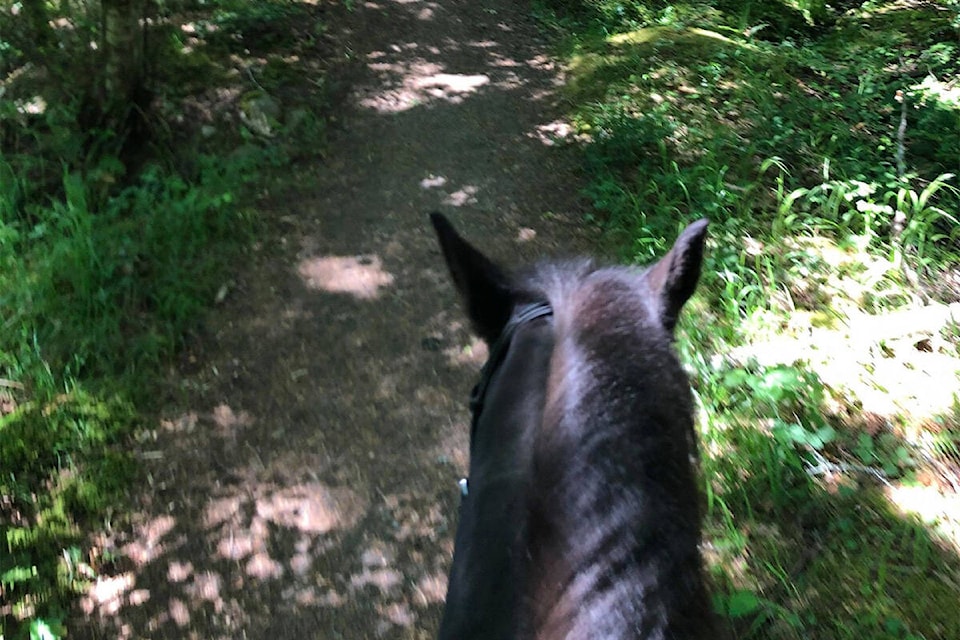Over the course of its 55 kilometres, users of the Galloping Goose regional trail are likely to encounter those on foot, bike, stroller and even on horse.
The way they interact with each other can be amazing, or dangerous.
The trail, commonly called the Goose, connects Sooke, Metchosin, Colwood, Langford, View Royal, Saanich and Victoria. As such, it’s commonly used as a commuter trail by cyclists. Most are respectful, according to regular rider Paula Leweke, but there’s a small percentage that put others at risk.
“I don’t want anyone to get hurt or anyone to die as a result of thoughtlessness on the trail,” the Metchosin woman said. “There are amazing, wonderful, kind, thoughtful people out there. It’s just a minority that are the problem.”
Horses tend to stick to the rural areas of the Galloping Goose, but it’s part of a well-used network. The trail was once a railway line built during the First World War. It is part of a national multi-use trail system linking trails from coast to coast to coast and it intersects with the Lochside Regional Trail – another former railway line – that runs Saanich through to Sidney. It also intersects with the E&N Rail Trail.
Horse riders are at risk aboard a 900- to 1,400-pound prey animal with a predisposition for flight over fight and a tendency to be easily spooked, she said.
READ ALSO: Sooke man leads petition to build pedestrian bridge over ‘dangerous crosswalk’
“I myself am quite lucky because I have been riding all these years a horse that is not reactive,” Leweke said. Though at 67, riding a horse that can handle the unknown is a conscious choice, she added.
Sometimes however, cyclists hurtle by at what she estimates to be beyond 40 km/h, with very little sound.
“If you have a bike rider that goes by you that fast, that can really scare a horse,” she said. “They can literally ride right up the bum of the horse before you’re even aware.”
While ringing a bell would help, that too can spook some animals. Lewke recommends cyclists call out instead. It’s as much to alert a horse rider as it is for the bike rider. Equestrians, once alerted, are expected to move single file to allow passing.
The bulk of interactions are good. At the beach people ask to touch the horses, another teachable moment for Leweke; a moment.
“I love that, my horses are really good with people. Not all horses are,” she said.
She also hopes drivers can be cautious as horses and riders make their way to the trail. Cars should give a wide berth and slow to 10 to 20 km/h.
ALSO READ: Jann Arden backs petition to stop ‘appalling’ live horse export, slaughter
